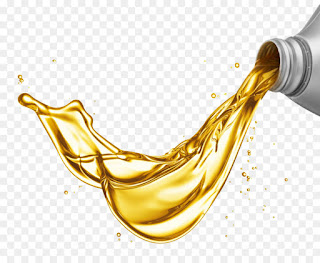Aviation Oil
Consumption and When to Change
Mike Busch’s Checking the Dipstick (November 15, 2016; archive.org link) provides two excellent visual aids:
- A chart showing the acceleration of oil consumption over time in service (“the viscosity of the oil decreases as the oil deteriorates”).
- What “good” vs. “due to be changed” oil looks like.
If your oil remains relatively light-colored and translucent after 25 hours in service, you can be reasonably confident that your cylinders and rings are in fine condition and that your oil can prudently remain in service for 40 or 50 hours. On the other hand, if your oil gets dark and opaque after 10 or 15 hours, you’d be wise to change your oil more often— perhaps at 25 hours—and you may want to investigate the possibility that one or more cylinders are excessively worn.
Which Oil, What Additives
We’ve been using AeroShell W100 and adding CamGuard. (In fact, there’s a 1.5 oz. plastic shot glass in the plane, to add an appropriate amount of CamGuard whenever a quart gets added.)
CamGuard ... is capable of measurably reducing engine wear metals ... Mike Buschs in-engine tests and our bench tests reveal that CamGuard improves corrosion resistance. ... CamGuard has consistently demonstrated the best corrosion protection of any of the oils we have tested.
https://www.aviationconsumer.com/maintenance/camguard-oil-test-results-require-time/
Ed Kollin, CamGuard’s inventor, states he uses Phillips 20W-50 year ’round (and I’m thinking that’s the way forward, once the engine is back in the Mooney):
- Straight from the source, in a discussion on MooneySpace (“I recommend and use Phillips 20W-50 XCll”).
- SuperCub.org forum discussion
Mike Busch echoes this, in All About Oil (January 2011):
For most of the airplanes we manage, we recommend AeroShell W100 with a pint of CamGuard added at each oil change. That’s what I use in my airplane, and my two engines are at nearly 200 percent of time between overhauls (TBO) and still going strong. For wintertime operations in cold climates, I recommend Phillips X/C 20W-50 multigrade with a pint of CamGuard.
Oil Analysis
The Mooney came with about a decade’s worth of Aviation Oil Analysis by ALS Laboratory Group's Tribology Division reports. I switched to what everyone I know uses and my mechanic recommended, Blackstone Labs. They’re useful but they’re not comprehensive; case in point, the Mooney had serious spalling on the intake lobes on the camshaft, that was not detected in the Blackstone analyses. Per Mike Busch, asked if oil analysis would uncover an issue with spalled camshaft and lifters:
Probably not ... Generally speaking, when cam and lifter stuff comes apart, we don’t see it in oil analysis. The reason is, when cams and lifters come apart they come apart pretty rapidly, and they throw off pretty good sized pieces of metal ... That metal is gonna be caught in the suction screen or caught in the oil filter and it’s never going to wind up in the sample jar. So that’s why we very rarely will see evidence of cam and lifter spalling in oil analysis. Oil analysis only sees microscopic wear metal particles that generally are thrown off by very slow wear events. So if we have for example accelerated wear of an exhaust valve guide, that’s going to show up in oil analysis as high nickel. The exhaust valve guide is made of very hard material, the exhaust valve stem is chrome, and is very hard, so the wear rate is very slow and the wear particles that are thrown off are very very tiny. And they are tiny enough that they would pass through the oil filter and be suspended in the oil, and be analyzed when the sample goes to the lab. But anything that throws off pretty good sized pieces of metal, say 100 microns or bigger, those are always going to be caught in the oil filter and they’re never going to end up in sample jar. So you wouldn’t expect oil analysis to show those things.
Fresh Annual EAA presentation, September 2020.

Comments
Post a Comment